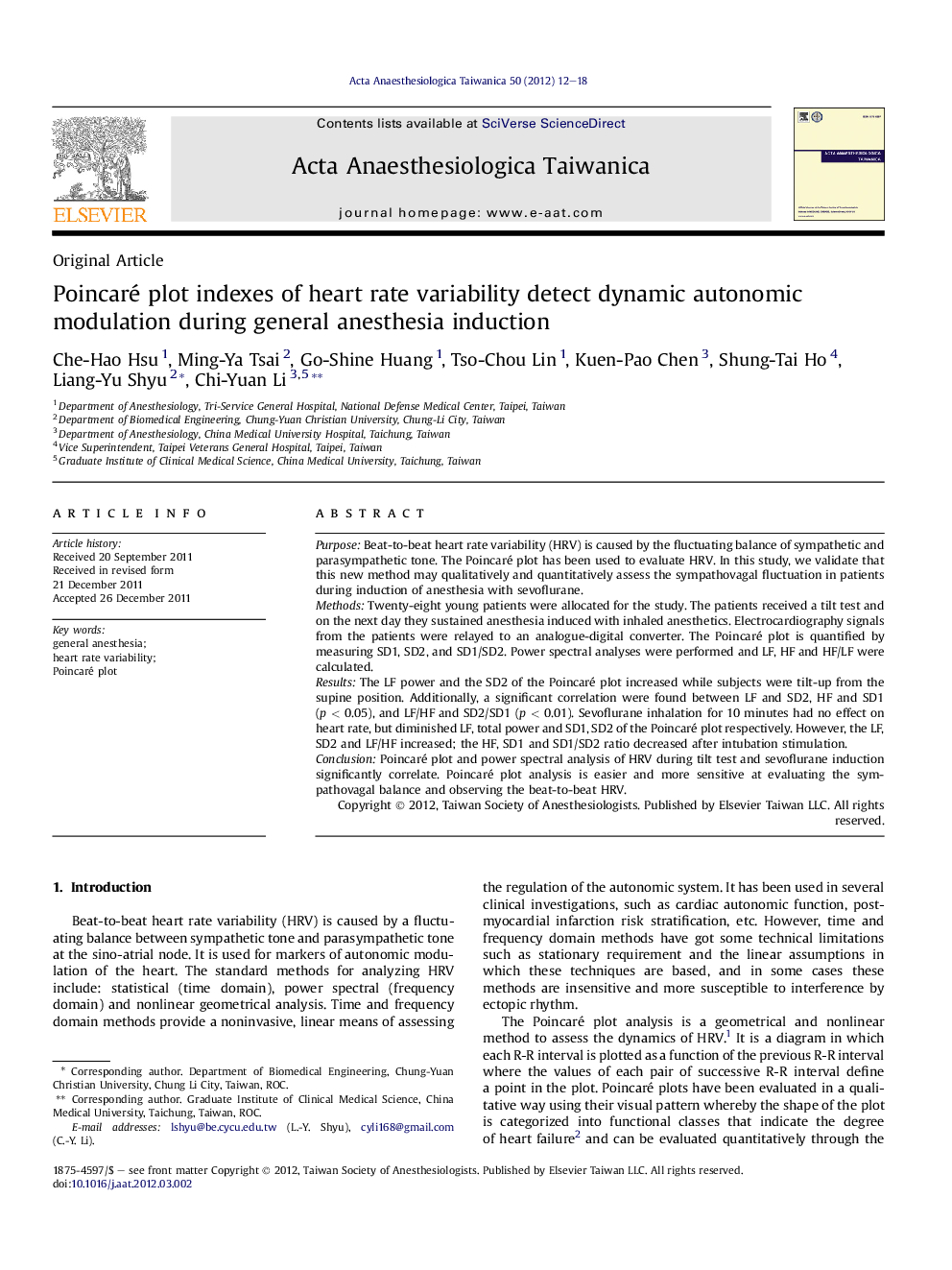| Article ID | Journal | Published Year | Pages | File Type |
|---|---|---|---|---|
| 2741581 | Acta Anaesthesiologica Taiwanica | 2012 | 7 Pages |
PurposeBeat-to-beat heart rate variability (HRV) is caused by the fluctuating balance of sympathetic and parasympathetic tone. The Poincaré plot has been used to evaluate HRV. In this study, we validate that this new method may qualitatively and quantitatively assess the sympathovagal fluctuation in patients during induction of anesthesia with sevoflurane.MethodsTwenty-eight young patients were allocated for the study. The patients received a tilt test and on the next day they sustained anesthesia induced with inhaled anesthetics. Electrocardiography signals from the patients were relayed to an analogue-digital converter. The Poincaré plot is quantified by measuring SD1, SD2, and SD1/SD2. Power spectral analyses were performed and LF, HF and HF/LF were calculated.ResultsThe LF power and the SD2 of the Poincaré plot increased while subjects were tilt-up from the supine position. Additionally, a significant correlation were found between LF and SD2, HF and SD1 (p < 0.05), and LF/HF and SD2/SD1 (p < 0.01). Sevoflurane inhalation for 10 minutes had no effect on heart rate, but diminished LF, total power and SD1, SD2 of the Poincaré plot respectively. However, the LF, SD2 and LF/HF increased; the HF, SD1 and SD1/SD2 ratio decreased after intubation stimulation.ConclusionPoincaré plot and power spectral analysis of HRV during tilt test and sevoflurane induction significantly correlate. Poincaré plot analysis is easier and more sensitive at evaluating the sympathovagal balance and observing the beat-to-beat HRV.
